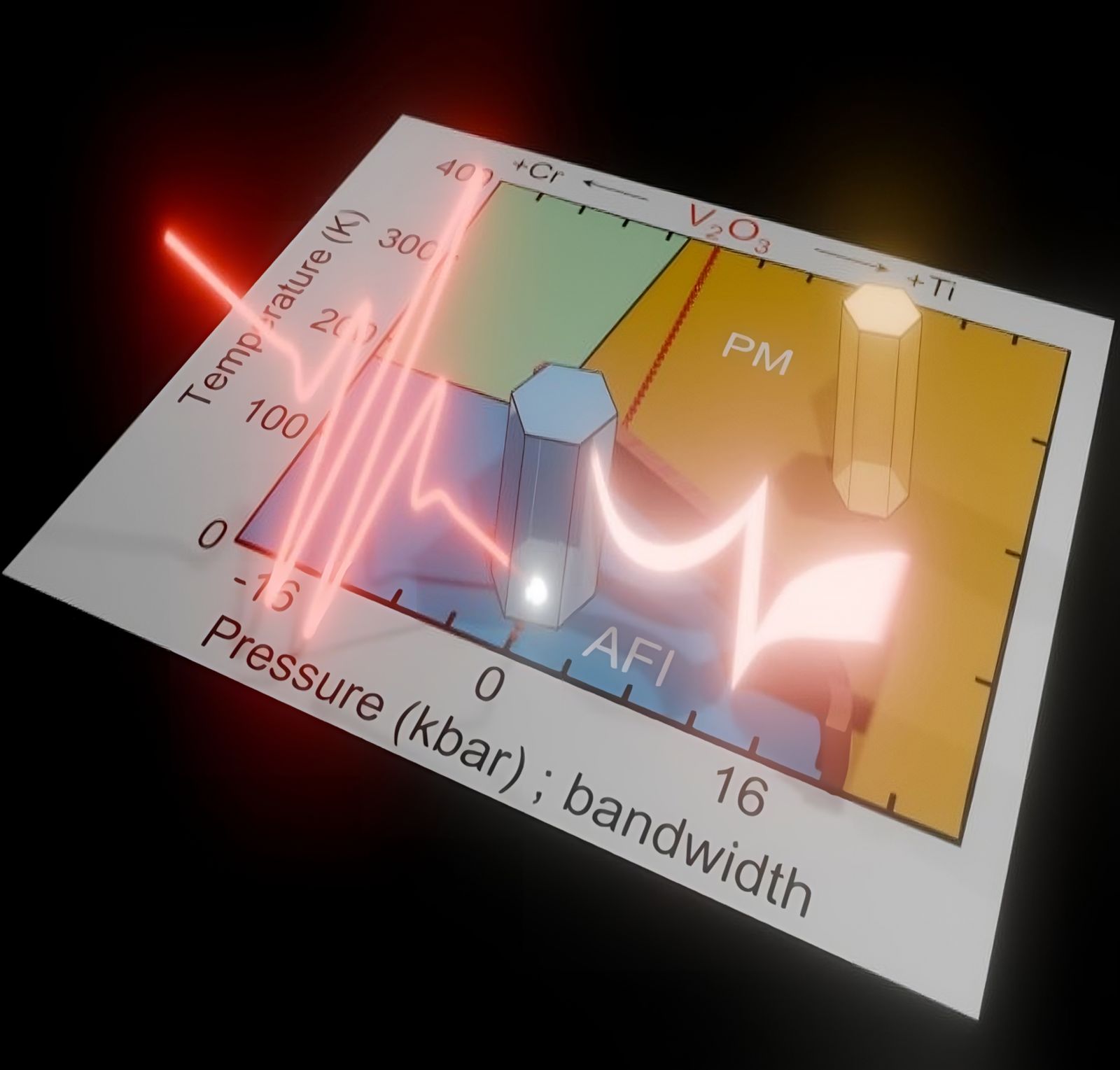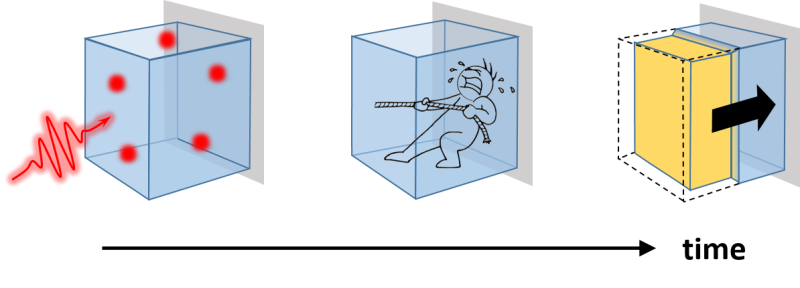Follow us on Google News (click on ☆)

Artistic depiction of the phase diagram of the Mott material V2O3, highlighting its initial insulating state (in blue) before being photoexcited by an ultrafast laser, driving it toward a metallic state (in yellow) through a strain wave mechanism.
© Tatsuya Amano
A discovery, published in the journal Nature Physics, that could lead to major breakthroughs in the world of ultrafast electronics.
What if it were possible to change the nature of a material in a flash, turning it from an insulator into a metal within a fraction of a second? This is the feat achieved by chemists and physicists from the CNRS and Japan as part of the international research laboratory DYNACOM. They exploited the remarkable properties of a so-called "Mott insulator."
The insulating nature of these materials does not stem from the absence of charge carriers, as in conventional insulators, but from their lack of mobility due to repulsive interactions between electrons. Although theoretically conductive, these materials thus behave as electrical insulators.
Vanadium sesquioxide, V2O3, is a classic example of a Mott insulator. When cooled, it exhibits a dramatic transition between two states: metallic at room temperature, it becomes insulating at low temperatures, where its electrons are immobilized by their interactions. A team of French and Japanese scientists used ultrashort light pulses (100 femtoseconds; 1 fs = 10-15 s) to trigger an ultrafast transition from the insulating to metallic state in a thin film of V2O3.

Schematic representation of the mechanism of propagation of an ultrafast phase transition at the speed of sound.
From left to right: initial photo-excitation (a) inducing internal negative pressure (b) and propagation of the electronic transformation in the wake of a compressive strain wave front (c).
© Etienne Janod
This phenomenon relies on the propagation of strain waves generated by the light pulses, which travel at the speed of sound through the material. These waves disrupt the organization of electrons and atoms, leading to a state change. What is fascinating is that this process is not thermal in nature but acts more subtly by directly altering the material's structure.
Through time-resolved X-ray diffraction and optical spectroscopy experiments, the scientists observed that this transformation is driven by a transition to a simpler symmetry crystalline structure and a reduction in volume. In other words, the material only becomes metallic once its structure has been modified.
The potential implications of these results are numerous. Understanding and controlling these ultrafast transitions could pave the way for devices capable of switching between different states at unprecedented speeds, with potential applications in information storage and artificial intelligence based on the physics of Mott insulators.
This study thus unveils a new facet of Mott materials and phase transitions, where elastic waves play a central role in transforming electronic properties. The results are featured in the journal Nature Physics.
Writer: AVR
Reference
Propagation of insulator-to-metal transition driven by photoinduced strain waves in a Mott material.
T. Amano et al.
Nature Physics 2024
https://doi.org/10.1038/s41567-024-02628-4